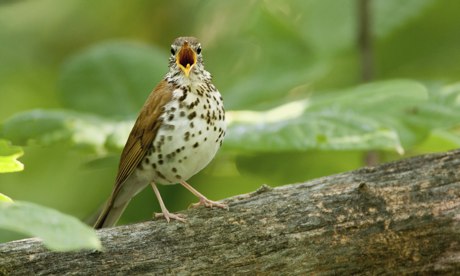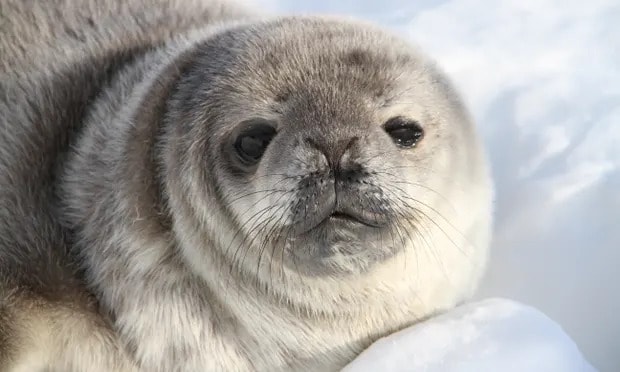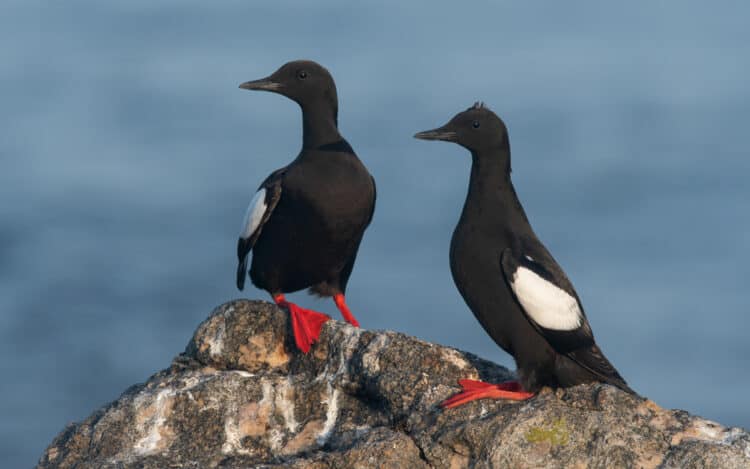Small birds, butterflies, bees and fruitbats will be fitted with tiny radio transmitters and tracked throughout their lifetimes from space when a dedicated wildlife radio receiver is fitted to the International Space Station next year.
The ability to follow the movements of very small organisms hour by hour from space will revolutionise our understanding of long-distance bird migrations, and give advance warnings of volcanic eruptions and earthquakes. And it should also help protect human populations from animal-borne diseases like Sars, bird flu and West Nile Virus, say conservationists.
Many animal species migrate continuously but biologists know the exact movements of only very few, mostly large ones. But the low-orbit Icarus wildlife receiver circling 200 miles (320km) above Earth should allow even butterflies to be followed, said Uschi Müller, co-ordinator of the €40m project, which is backed by the German and Russian space agencies and 12 scientific groups.
“To start with, Icarus scientists will use 5g transmitters but in the future we will use much smaller ones, under 1g, which will allow us to follow insects. It will be used for conservation, health and disaster forecasting”, she said.
Because animals are known to sense imminent tectonic activity, she envisaged birds and other animals living near disaster-prone zones being fitted with the transmitters. “It could give people an extra five hours warning of a disaster,” said Müller.
Rapidly developing miniature telemetry using satellites has already helped ornithologists understand the start of the British spring. Transmitters the size of a three-amp fuse have been fitted for three years to 13 British cuckoos. Last week scientists could see they were on their way back from the Congo rainforest.
The birds, given names like Whortle, Patch, Ken and David by the British Trust for Ornithology (BTO), which started to tag them in 2011, will not finish their 4,000-mile annual journey until mid-March at the earliest. But the tiny 5g transmitters show that one cuckoo called Skinner flew nearly 800 miles north last week, stopping briefly in Gabon, and is now in southern Cameroon. Others are on their way back from lakes and rivers in Congo-Brazzaville, the Democratic Republic of the Congo and Equatorial Guinea.
The mystery of exactly where the world’s 10-20 billion migratory birds go and how they navigate perilous journeys across continents and oceans without experience or guidance from parents has long puzzled people.
“All we knew until we attached the tracking devices to cuckoos was that British birds left in a south-easterly direction and that there was one record of a ringed bird found in Cameroon in 1938. It was a very big surprise when we found that nearly half were leaving in a south-westerly direction and migrating via Spain and west Africa,” said Chris Hewsom, research ecologist at the BTO.
Moreover, Hewsom has found that Welsh, Scottish and English cuckoos all take different routes to and from Africa. Some make 1,850-mile detours, others zig-zag across the Sahara and some have found several ways to navigate the Mediterranean.
One Welsh cuckoo, David, reached Somerset last April but turned back possibly to wait until the weather warmed up or because he found his favourite caterpillars had not emerged from a particularly long winter.
“Every time we put a tracking unit on a bird we find something incredible. Our knowledge is exploding. We are getting answers to questions which have been around for years. We are now able to precisely identify the routes they take, where they stop to feed, even how high they fly,” said Bryan Watts, director of the Center for Conservation Biology at William and Mary college in Virginia, US.
Watts, who tracks whimbrels, which breed in the high Arctic and winter in Venezuela, says satellite tracking has opened up a new world. “We were astonished to find the first bird that we tracked made a 3,500-mile nonstop flight from Virginia to Alaska, flying 35-40 mph for five solid days. We don’t know how they’re capable of these types of flights.”
Others, he has found, take a massive detour towards Africa to avoid “hurricane alley”, an area of warm water in the Atlantic stretching from the west coast of northern Africa to the US Gulf Coast where most hurricanes start. “They went right off the continent unexpectedly. It was amazing,” he says.
Until 10 years ago, satellite tracking was used only on large animals which could be fitted with powerful transmitters with long lives, but the new solar-powered devices only switch on when a satellite passes overhead, and are getting smaller every year.
“By next year we hope to have devices that weigh just 2g, which will be small enough to place on songbirds like wood thrushes, warblers and finches,” says Hewsom. “These will allow us to track birds like nightjars, too. We are getting to the stage we could do swifts, which would need devices that weighed no more than 1g.”
“Icarus and the miniaturisation of telemetry means we are going to be able to monitor the natural world for the first time. We know hardly anything about bird migrations. We can now see that in evolutionary terms birds must know when it’s a good time to migrate. We knew it was something like this but not at the individual level. This is answering questions and posing more,” says Kasper Thorup, a bird migration researcher at Copenhagen university.
Being able to track birds, and eventually very small insects, is now seen as vital tool for conservation as well as a benefit for human health, which is increasingly linked to the movement of animals and people. About 70% of worldwide epidemics, like Sars, West Nile virus or bird flu, result from animal-human contact.
More knowledge about migrations is needed because populations of migratory birds like wood warblers, spotted fly-catchers and nightingales are declining fast, says the RSPB’s Graham Madge. “Understanding the routes they take can help us preserve them and prevent higher than normal rates of infection among wildlife populations. We still don’t know where they go and many are only here for a few months. Without knowing exactly where they go and when we can not understand how to conserve them.”
“We are getting close to a full life cycle understanding of birds,” says Watts. “We used to see birds at different places at different times, but we did not know they were the same ones. What we are seeing now for the first time is the way birds connect places. We are reducing the size of the world.”
This article was written by John Vidal for the Guardian. Lead Image: The new radio transmitters will help provide more information on the migratory habits of birds such as the wood thrush. Photograph: William Leaman/Alamy.







Leave a Reply